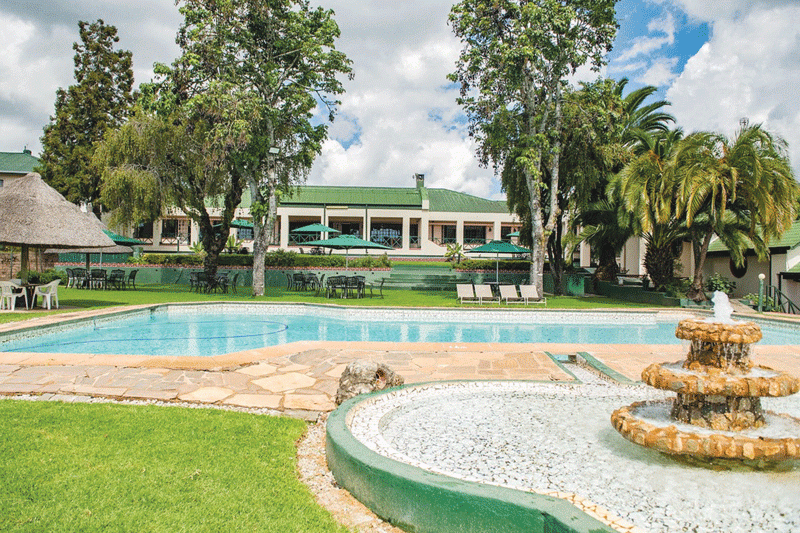
Farmers are constantly required to ask different markets what they require to be planted.
The Chinese in Norton ended up setting up their own garden after realising that there were few farmers planting the crops that they prefer.
Imagine, Norton with all those plots around it, failed to feed just a handful of Chinese.
Recently, at a restaurant in the city, I overhead patrons asking for asparagus.
They were advised that the farmer who usually supplies had fallen ill. It got me thinking — is that not a crop an ordinary farmer can do, after all its just grass.
A perennial grass.
This means that once it gets established, the tender spears will return year after year. In addition, its ferny foliage makes it an excellent ornamental.
Here’s how to grow asparagus — from planting all the way through to harvest!
- Asparagus worth your while
Keep Reading
It can be grown in most temperate regions but grows more robustly in cooler areas with long winters.
The edible part of the asparagus plant is the young stem shoot, which emerges as soil temperatures rise above (10°C).
The most important thing to know about asparagus is that you really should not harvest it during the first couple of seasons. These plants need to be established before you can harvest sustainably.
The patience is well worth it, though, asparagus beds can be productive for 15, 20, and sometimes up to 30 years.
Because asparagus stays productive for so long, it’s essential to plant the best variety available for your area.
Given that asparagus is a perennial plant that comes back year after year in the same spot, it’s important to select a proper planting site where it will thrive.
Choose a site that gets full sun (6-8 hours of direct sunlight).
Place the asparagus bed toward the edge of your garden, where it will not be disturbed by the activity of planting and re-planting other areas.
Ensure the bed will drain well and not pool with water.
Asparagus does not like to have its roots get too wet.
If you do not have a site with good drainage available, consider growing asparagus in raised beds instead.
Asparagus thrives in neutral to slightly acidic soil (pH of about 6.5).
Eliminate all weeds from the planting site, digging it over and working in a 2- to 4-inch layer of compost, aged manure, or soil mix.
The soil should be loosened to 12 to 15 inches in depth to allow the asparagus crowns to root properly and not be disrupted by rocks or other obstacles.
Asparagus is usually grown from 1-year-old plants called “crowns,” but can also be grown from seed.
Starting with asparagus crowns, however, eliminates the year of tedious weeding that comes with starting from seed, and will speed up production overall.
A few varieties, such as open-pollinated ‘Purple Passion’ and hybrid ‘Sweet Purple’, can be grown from seed.
Start seeds indoors in spring and set out the seedlings when they are 12 to 14 weeks old.
Seeding
Soak seeds in water for up to 24 hours before sowing.
Sow seeds in moistened peat or seed-starting soil in flats or peat cups.
Once plants reach 12 inches in height, harden them off outdoors for a week.
After winter, transplant the young plants to a temporary garden bed. Once they mature in the fall, identify the berry-less male asparagus plants and transplant them to your permanent planting site, removing the less-productive female plants.
Plant crowns deeply to protect them from the cultivation needed for annual weed control.
Dig a trench of about 12 to 18 inches wide and 6 to 8 inches deep. If digging more than one trench, space the trenches at least 3 feet apart.
Soak the crowns briefly in lukewarm water before planting.
Make a 2-inch-high ridge of soil along the center of the trench and place the asparagus crowns on top of the mound, spreading their roots out evenly.
Within the trench, space asparagus crowns 12 to 18 inches apart (measured from root tip to root tip).
When the trench is filled, we would recommend adding a 4- to 6-inch layer of mulch.
The biggest issue with asparagus is managing weeds during the first two years. Asparagus should not have its roots disturbed, so you’ll need to gently hand-pull weeds, taking care not to disturb asparagus’ roots.
Weeds will become less of an issue as the plants fill in.
Mulch around the plant with compost or grass clippings to help retain soil moisture and reduce weed growth.
During the first 2 years after planting, asparagus plants need 1 to 2 inches of water per square foot per week. If you are not receiving adequate rainfall, you will likely need to water. Use drip irrigation if possible.
Asparagus thrives on a steady supply of plant food. Consider an organic fertilizer during the growing season. Follow the instructions on the label of whatever product you use.
Before harvesting
Do not harvest the spears in the first or second year (the plant needs time to grow out its root system), but cut down dead foliage in late fall and side-dress with compost.
During the second year, side-dress with compost in spring and early fall and cut down dead ferns in late fall. Keep the bed thickly mulched.
During the third year, the bed should be in full production, so you can start to harvest asparagus sparingly throughout the season.
Transplanting asparagus
If you must move asparagus, transplant the crowns in just after winter
Recommended Varieties
Asparagus plants are either male or female.
Female plants produce berries; male plants do not expend energy on berries so they can be up to three times more productive than female plants. For this reason, growing male asparagus plants is often preferred.
Gardeners in Zones 4 to 6 have a wider selection of varieties, including ‘Jersey Giant’, ‘Jersey King’, and ‘Jersey Knight’. Older varieties ‘Mary Washington’ and ‘Martha Washington’ may produce female plants, which are not as productive as the males.
In colder climates, ‘Guelph Millennium’ and other varieties that emerge late often escape damage from spring freezes.
- Gwabanayi is a journalist and a farmer in his own right. [email protected], 0772865703.











